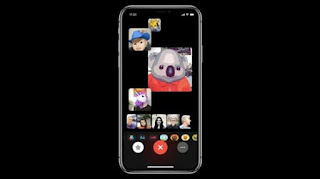[EXPERIMENTAL] Unofficial CM12 for WeTek Play with Kodi & TVH Live TV
Release notes
This build includes a totally new kernel and Amlogic code based on their latest SDK, and I took the chance to get rid of Amlogic DVB drivers and use those from WeTek Play's OpenELEC build; by doing this I am able to run DVBAPI apps like Tvheadend.
Kodi Live TV support under Android was one of the most requested features, this experimental build allows you to run Lollipop and Kodi Live TV (WeTek Theater is no longer supported with the provided drivers).
The new 3.10 kernel brings OMX support as well (Android libstagefright media decoding), while Amlogic's prebuilt libraries work very good on KitKat (in case I can do a CM11 build with this kernel) they don't work at all with Lollipop so just consider it broken, for more info you can read the release notes of this rom.
Just to be sure to have a good media experience use Kodi, I ran all my tests running the "14.1 RC beta" dated 12 Jan, that you can find here (this is a flashable zip and, in case you don't wanna sideload the apk you can just flash it and at boot it should be automatically installed), anyway feel free to experiment with nightlies, etc.
Now I will give you some details on how to configure Tvheadend, if you already know what to do you can skip this section.
Tvheadend will run automatically at boot and you can access to it from a web browser (even from a different device, you are not forced to do it from the box) at http://wetek_ip_address:9981
From this WebUI click "Configuration" -> "DVB Inputs" -> "Networks" and add a new Network according to the type of tuner you have (for example I created a DVB-S network called "Hotbird" and assigned the E13.0 pre-defined muxes, just pay attention that they are not bleeding edge updated so if you don't find a channel you might have to insert manually the transponder by looking at frequencies on sites like kingofsat or lyngsat).
After that go to "TV Adapters", click the link with a folder icon showing your adapter's name (if you're running the dual DVB-S2 tuner you will see two of them, #1 is the input closer to the edge of the box, while #0 the one closer to the rear usb ports), and click "Enabled", configure the eventual parameters (DiseqC, Unicable, etc.) and save the settings.
Go to the option right under the adapter name, assign it to the network that you have created and configure the eventual parameters.
Now go back to "Networks", after a couple of minutes you should see the "Scan Q length" lowering its value, when in reaches 0 everything has been scanned and you can proceed mapping the channels from "Services" section.
For further instructions, here you can find a tutorial to show you how to configure the DVB-S tuner, and here one for the DVB-S tuner.
Before leaving the configuration go to "Recordings" and set a "Recording System Path" pointing it to your external storage (on my roms it will be "/storage/sdcard1" for the MicroSD, "/storage/usbdisk0" for the lower rear usb port, "/storage/usbdisk1" for the upper rear usb port and "/storage/usbdisk2" for the side usb port).
Not doing that will drive Kodi's Tvheadend client plugin crazy trying to determine the available space for recordings.
Now you can launch Kodi, go to its settings, enable Live TV and select the "Tvheadend backend".
Remember that this is still something EXPERIMENTAL
Like the other Lollipop buils, remember, this is not a bug, but a consequence of the switch to art from dalvik: first boot, updates and apps installation will take longer; this happens because art compiles the apk and does not work like dalvik that was using a just-in-time approach (so expect almost 10 minutes for the first boot and future upgrades)
First install instructions
* As really first thing get this CWM recovery, unrar it and copy "recovery.img" to a MicroSD.
* Power off your device and unplug the AC power cord.
* Get the latest available ROM and GAPPS version from the links below and copy them to a MicroSD card.
* Now insert the MicroSD card in your STB.
* Plug the AC power cord while you keep pressed the little reset pinhole (located on the bottom of the device) for 10 seconds (just count slowly to ten and it will be good).
* Once the device has booted to recovery perform a factory reset and flash the ROM's zip for first followed by the GAPPS zip.
* Reboot and enjoy CyanogenMOD.
Update instructions
* If you're coming from the "regular", not "experimental" build of CM12, please follow the "First install instructions"
* Get the latest available ROM and GAPPS version from the links below and copy them to a MicroSD card.
* Now insert the MicroSD card in your STB.
* Enable "Developer options" following this tutorial and from it enable the "Reboot to recovery" option.
* Bring up power menu by keeping pressed the power button on the STB for a couple of seconds (or pushing F4 if you have a keyboard plugged in) and select "Reboot -> recovery".
* Once the device has booted to recovery flash the ROM's zip for first followed by the GAPPS zip.
* Reboot and enjoy your updated CyanogenMOD.
Downloads
* ROM 2015-01-28
* GAPPS 2015-01-07 (LITE)

No comments:
Post a Comment